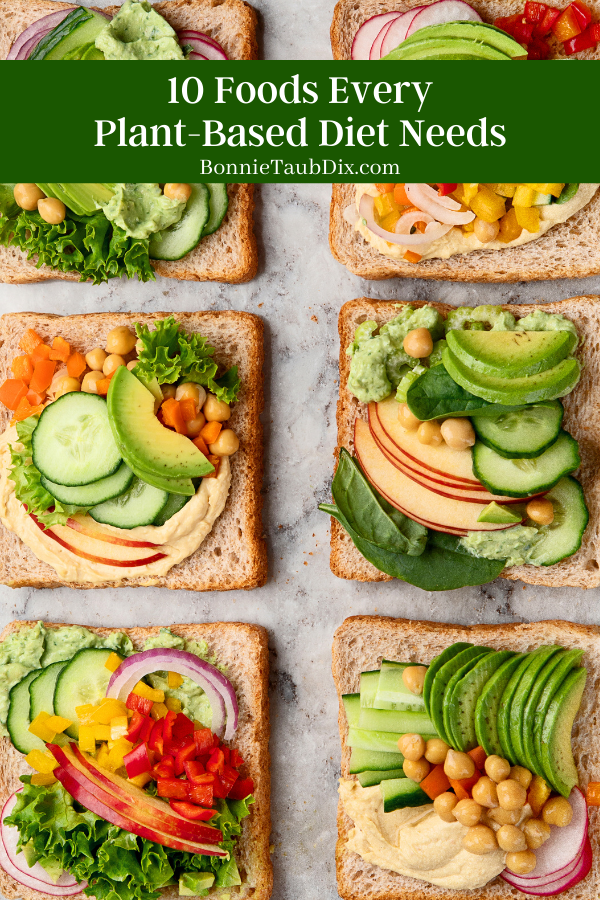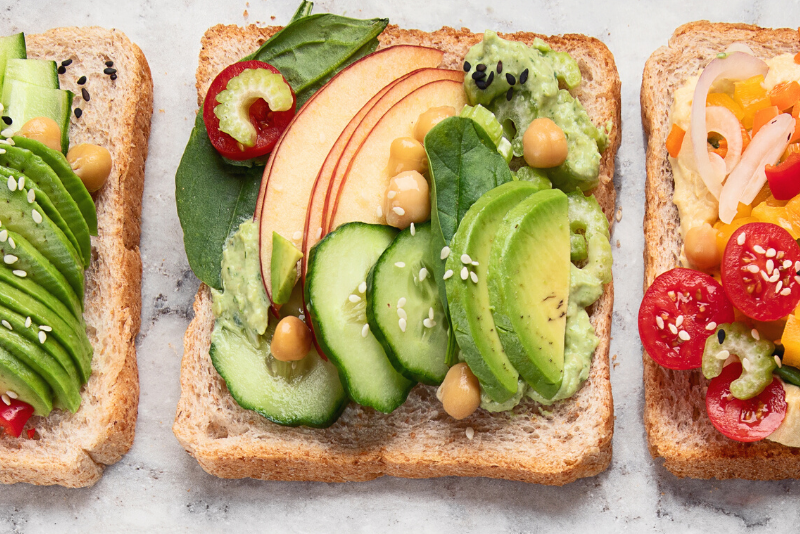A list of foods that provide the necessary nutrients to round out a plant-based diet. Be sure to incorporate these foods daily if you’re plant-based.
It’s hard to turn on the news without hearing about the latest diet fad taking the world by storm. Lately, one plan in particular has been getting lots of buzz: plant-based eating. From the latest Dietary Guidelines for Americans to the “Meatless Monday” movement, plant-based plates are becoming mainstream.
But unlike some food and nutrition trends that come and (thankfully) go, picking plants may be here to stay. And that’s a good thing – for people and their planet. Although there is no hard and fast definition of plant-based eating, it basically means that the majority of the foods on your plate are composed of plants.
While plant-based diets can be similar to vegan and vegetarian diets – free of meat, poultry and fish – you don’t have to swear off burgers or ditch all animal products to reap the benefits of the plant kingdom. Even certain vegans have become “veggans” by adding eggs to their diets in order to boost their culinary landscape and nutrient profile. No matter what diet you follow, picking plants has its advantages. Start with these 10 plant-based foods – and get ready to feel your body smile:

1. Almonds
Almonds contain a wealth of nutrients including calcium, vitamins E and B-6, riboflavin, niacin, thiamin, pantothenic acid and folate. These fiber-rich nuts have been shown to improve gut health by affecting the microbiome and bacteria in the colon. Almonds are also a source of protein and heart-healthy fats, which have been shown to reduce “bad” LDL cholesterol. In a recent study in the Journal of the American Heart Association, researchers put adults who had elevated cholesterol but were otherwise healthy on a diet for several weeks. Half the group got 1.5 ounces of almonds as a daily snack while the other group ate the exact same diet, except with muffins (with the same number of calories as the almonds) as a snack instead. Compared to the muffin eaters, the almond eaters reduced their LDL cholesterol, belly fat and waist circumference, suggesting that almonds trump high-carb snacks in preventing heart disease and diabetes. (But if you do want to make muffins and you’re gluten-sensitive, almond flour is naturally gluten-free!)
2. Beans
Beans boast myriad health benefits, and their versatility helps them feel comfortable among a variety of food groups. Rich in complex carbs, beans are in the same food group as breads and starches. But as a food that comes from the ground and that has plenty of vitamins, minerals and antioxidants, they also feel right at home in the vegetable group. They can also hold their own in the protein group, where a half cup provides as much protein as an ounce of meat – but with little to no fat or cholesterol. In fact, the soluble fiber in beans has been shown to lower cholesterol and triglyceride levels.
3. Whole Grains
Grains add fiber to help move you and fill you, and the soluble fibers in oats can deliciously lower cholesterol levels. Not all grains are alike, however, so check labels to be sure that “whole grains” is the first ingredient listed on the package you’re buying. Whole grains – like 100-percent whole wheat, barley, quinoa, millet, rye and brown rice – contain the entire grain kernel, which provides you with heart-healthy fats, fiber and a variety of vitamins and minerals that have been shown to reduce risks of heart disease. If you need to follow a gluten-free diet, go with gluten-free whole grains like amaranth, buckwheat (the word “wheat” is misleading), corn, millet, oats (although you’ll need to check the label carefully to be sure they are truly gluten-free), rice and wild rice, sorghum and teff. And don’t be duped by the word “multigrain,” which simply means that several types of grains were used in the making of a product – whether or not those grains are “whole.” You may be getting refined grains that are less nutritionally-dense instead.
4. Chia, hemp seeds and flax seeds
Seeds, such as chia, hemp and flax, contain omega-3 fatty acids, which have been shown to help cut “bad” LDL cholesterol, prevent cardiac arrhythmias and reduce triglycerides, blood pressure and plaque build-up. For just 75 calories, 2 tablespoons of flax seeds provide over 100 percent of your daily omega-3 fatty acid needs. Besides making your heart happy, these seeds are great sources of fiber and plant protein.
5. Quinoa
Though quinoa may seem like a new, trendy food, it has actually been around for centuries. Quinoa – often served as a grain, although it’s really a seed – provides unique nutritional benefits when compared to other whole grains. First, its higher fat content provides additional heart-healthy benefits. Second, quinoa has twice the amount of calcium as whole wheat. Third, quinoa has an impressive antioxidant composition, helping reduce inflammation and fight free radicals.
6. Avocado
Avocados contribute nearly 20 vitamins, minerals and other beneficial plant compounds. Now that’s a food that multi-tasks! Seventy-five percent of the fat in avocados is unsaturated (monounsaturated and polyunsaturated fats), making them a great swap for foods high in saturated fat. If you enjoy baking, here’s a tip that will help make over some of your favorite recipes: Sub avocado for butter or shortening to reduce the number of calories and amount of saturated fats in baked goods. As a calorie comparison, 2 tablespoons of avocado has 50 calories, while 2 tablespoons of butter has 204 calories.
7. Soy
Soy is a lean source of plant protein with various health benefits including reducing cholesterol, squelching uncomfortable menopausal symptoms, supplying fiber and providing many essential vitamins and minerals including folate, calcium, magnesium, zinc and vitamin K. What’s more, soy is a “complete” plant protein, meaning it contains all nine amino acids required by the human body to support health and well-being. For this reason, soy is often a staple food item for vegetarians and particularly, vegans. You can find it in the form of tofu, edamame and tempeh, to name a few.
8. Fruits and Vegetables
These may be the brightest jewels in the plant’s crown. Produce is rich in vitamins, minerals, antioxidants, polyphenols, phytonutrients and all of those other words that most of us want more of, yet we can’t define. The fiber in fruits and veggies helps us to feel full and satisfied without being high in calories. And, whether fresh, frozen or canned, these foods should take up half the real estate on your plate.
9. Herbs and Spices
Seasoning your food with herbs and spices enables you to jazz up any dish without needing to go to your salt shaker for flavor. But besides boosting taste, spices come with multiple benefits. Chili peppers can ease pain, oregano is an anti-bacterial agent, turmeric has anti-inflammatory properties that have been shown to relieve arthritis pain and a hefty dose of cinnamon could help control blood glucose levels.
10. Alternative “Milks”
Alternative milks, like almond milk, has taken over the refrigerator section of the supermarket as well as the center aisles. These beverages provide variety and a host of benefits to those who choose not to drink dairy milks. But buyer beware: Check food labels carefully to be sure that you’re choosing a product that will contain valuable nutrients like calcium. Almond milk, for example, is an excellent source of calcium, a good source of fiber and it’s low in sugar content.


